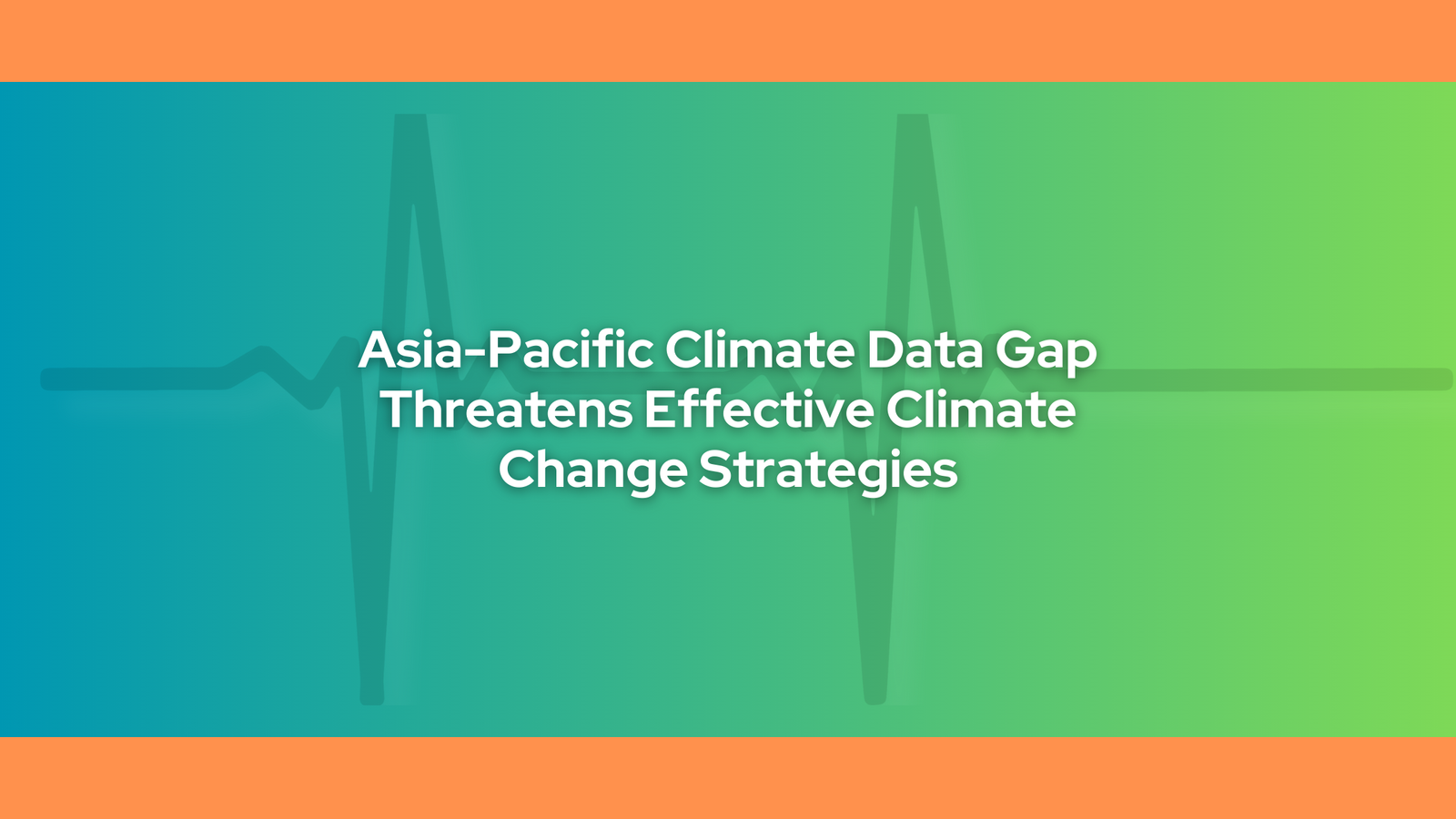
The stakes are particularly high in the Asia-Pacific area, where the fight against climate change is not simply one of environmental sustainability but also survival. As Asia-Pacific grapples with extreme weather catastrophes, policymakers and legislators are struggling. They are having difficulty gathering and evaluating the data necessary to respond to climate change. This climate data gap in Asia-Pacific does not only endanger environmental resilience but also the supply chains that support the economy of the region.
Developing countries are particularly hard-hit by climate change, with poorer countries facing severe vulnerabilities. Extreme weather events like heatwaves, floods, and droughts exacerbate environmental and socioeconomic systems, leading to an increase in poverty, a decrease in food security, and declining levels of nutrition and health.

A survey released in August 2024 by the Asia Development Bank revealed significant gaps in climate data collection in Asia-Pacific. Out of 29 national statistical offices surveyed, it was revealed that some claim they don’t have enough staff working on climate data, while others don’t have a section dedicated to it.
The majority of respondents reported that, for many different categories of data, including those on factors contributing to climate change like the usage of fossil fuels and overall greenhouse gas emissions, their access to geographically detailed data was at best “fair.” There is a scarcity of important data on the effects on water security, infrastructure, particular geographic locations, and ecosystems.
The Asia-Pacific region, responsible for more than 50% of the greenhouse gas emissions globally, relies heavily on fossil fuels and still supplies 85% of its energy needs. A significant proportion of global emissions are coming from rapidly expanding economies that depend on fossil fuels to meet rising energy demand.
The tiny Pacific Island States, which make up just 0.01 percent of global emissions, are at the other end of the scale and face both immediate and long-term challenges due to factors like sea level rise.

While Asia-Pacific has the largest land mass, its temperature is also increasing compared to the global average. Add to that, the climate catastrophes and rising sea levels, proving that the region is most susceptible to the effects of global warming. In 2022 alone, there were 81 climate, weather, and water-related disasters across Asia. Eighty-three percent of these were storm and flood disasters causing more than 5,000 deaths and affecting more than 50 million people.
Policymakers in the area are unable to create focused, efficient policies to address the causes and impacts of climate change—or assess their efficacy—without access to high-quality data and the analytical tools necessary to interpret it.
ADB chief economist Albert Park said, “Asia and the Pacific is at the forefront of the climate battle.” He added that “the deadly heat waves and catastrophic floods we’ve seen in recent months show us what’s at stake. We need high-quality data and robust statistical capacity to avoid policy blind spots and make sure our strategies for tackling the climate crisis are well-informed. This means we need to invest in our statistical systems, our people, and our institutions. The cost of not doing so will be far higher than the cost of these investments.”
In addition to having a limited number of staff and little access to climate data, there are also inconsistent definitions and methods. When asked what factors contributed to these deficiencies, survey participants listed a lack of funding, methodological and technical challenges, inadequate technical staffing, a lack of collaboration with other stakeholders, and the perception that data on climate change is not important.